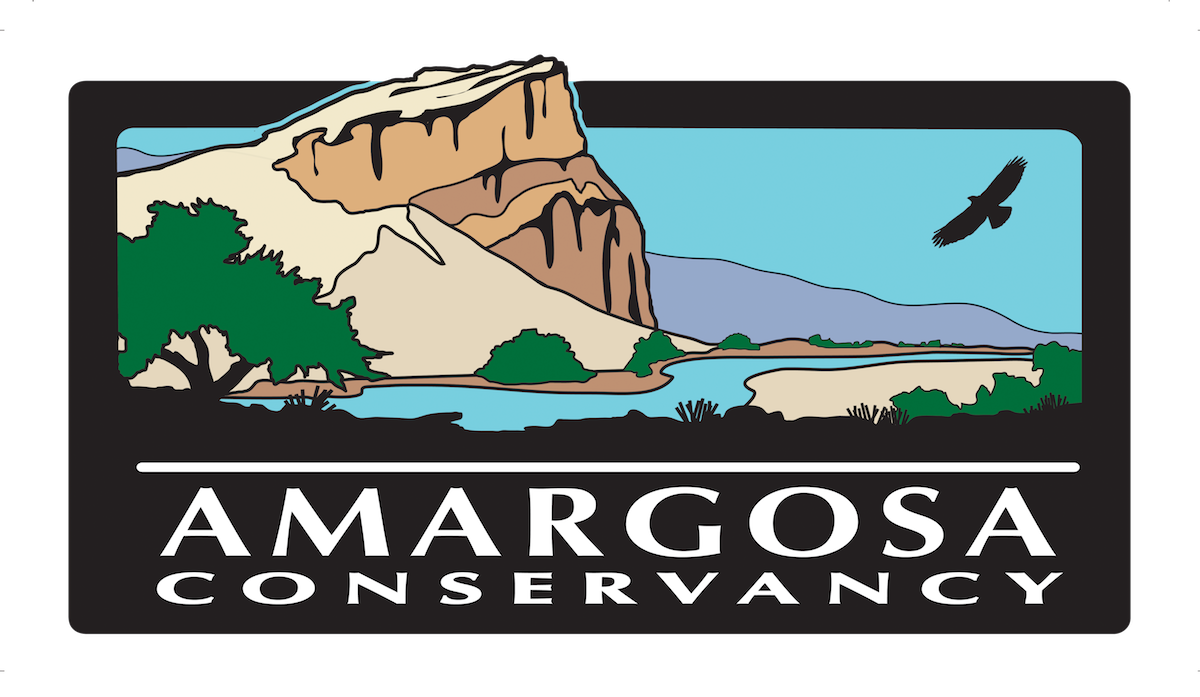Written by Christiana Manville, U.S. Fish and Wildlife Service
On Saturday January 8, 2022, partners and volunteers came together to plant 63 mesquite trees on The Nature Conservancy’s Beatty Narrows property just south of Beatty. We planted 56 screwbean mesquite trees (Prosopis pubescens) and 7 honey mesquite trees (Prosopis glandulosa). While we wanted the planting to be a community event, due to COVID-19 we had to scale back the number of people planting the trees to just six. This planting is part of a larger project to look at the screwbean mesquite die-off that is happening in the desert southwest. Each planted tree has an identification tag and students at the College of Southern Nevada (CSN) with their professor Dr. Lois Merkler will be monitoring these trees over the next few years, measuring tree growth and health.
 Volunteers plant a honey mesquite tree.
Volunteers plant a honey mesquite tree.
The project started several years ago when Christiana Manville, with the USFWS’s Partners for Fish and Wildlife Program, a private landowner habitat restoration program, provided funds to The Nature Conservancy (TNC) in Nevada to plant and monitor screwbean mesquite trees on private land. Screwbean mesquite trees had been dying in the Amargosa Watershed, and TNC was concerned about what impact this may have on birds and other wildlife. As the two groups started working together, they brought in more project partners, including Shoshone Village in California, Nevada Department of Forestry (NDF), Warm Springs Natural Area (in Moapa, Nevada), Ash Meadows National Wildlife Refuge (NWR), and CSN.
Project partners collected screwbean mesquite seeds from 4 locations: Warm Spring Natural Area, Ash Meadows NWR, and along the Amargosa River in Beatty, Nevada and Shoshone, California. NDF grew out the seeds into one-gallon sized container plants. Half of the plants were watered with a MICO+ solution, which contain beneficial fungi to help the trees develop strong roots while in their pots. Plantings also occurred in fall/winter of 2021/2022 in Ash Meadows NWR, Shoshone, and at Warm Springs Natural Area. The monitoring will tell us how these trees are doing and if trees from one geographic location do better than the others. It will also tell us if giving the potted plants MICO+ helps them survive better in natural areas.
Each planting location has its own challenges. In Beatty Narrows, the biggest challenges are burros and getting water to the plants. To deal with the burros we installed temporary fencing, consisting of four-foot-tall woven wire fencing with a strand of barbed wire on the top, around the planting area. To deal with the water issue, we planted the trees three feet deep, so that the tree roots are touching the groundwater. Special thanks to Brad Hunt with D&H mining who dug the holes for us with a small excavator. Despite his help, we only got 63 out of 110 trees planted. Planting trees three feet deep is a lot of work! We will be back sometime soon to complete the planting.
 Measuring the newly planted screwbean mesquite trees.
Measuring the newly planted screwbean mesquite trees.
Please consider supporting the AC so that we can continue to participate in these important projects.

